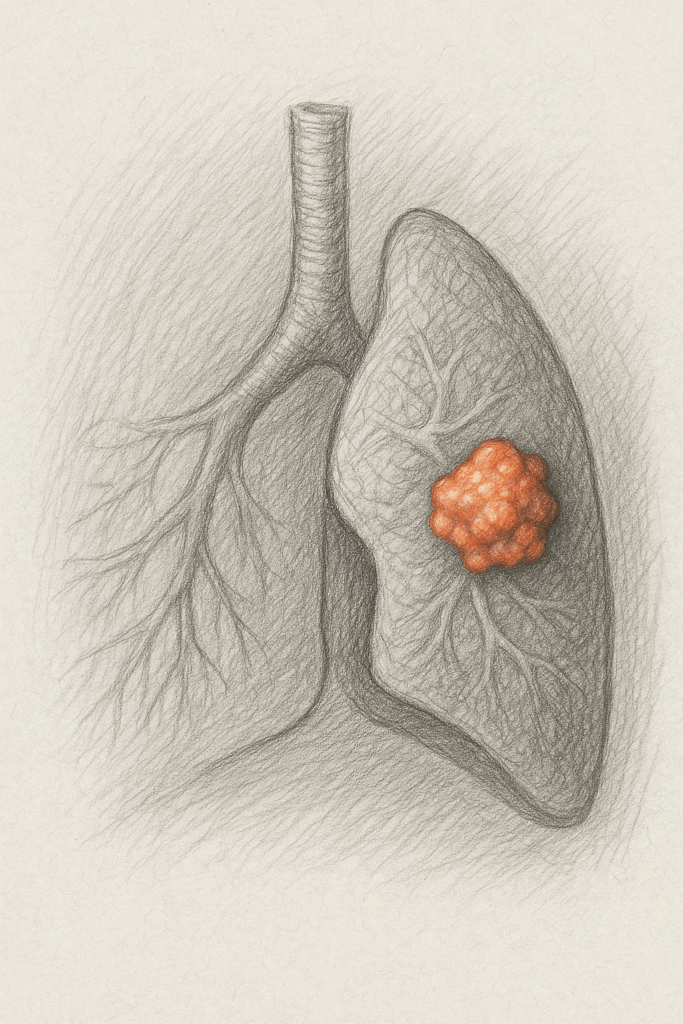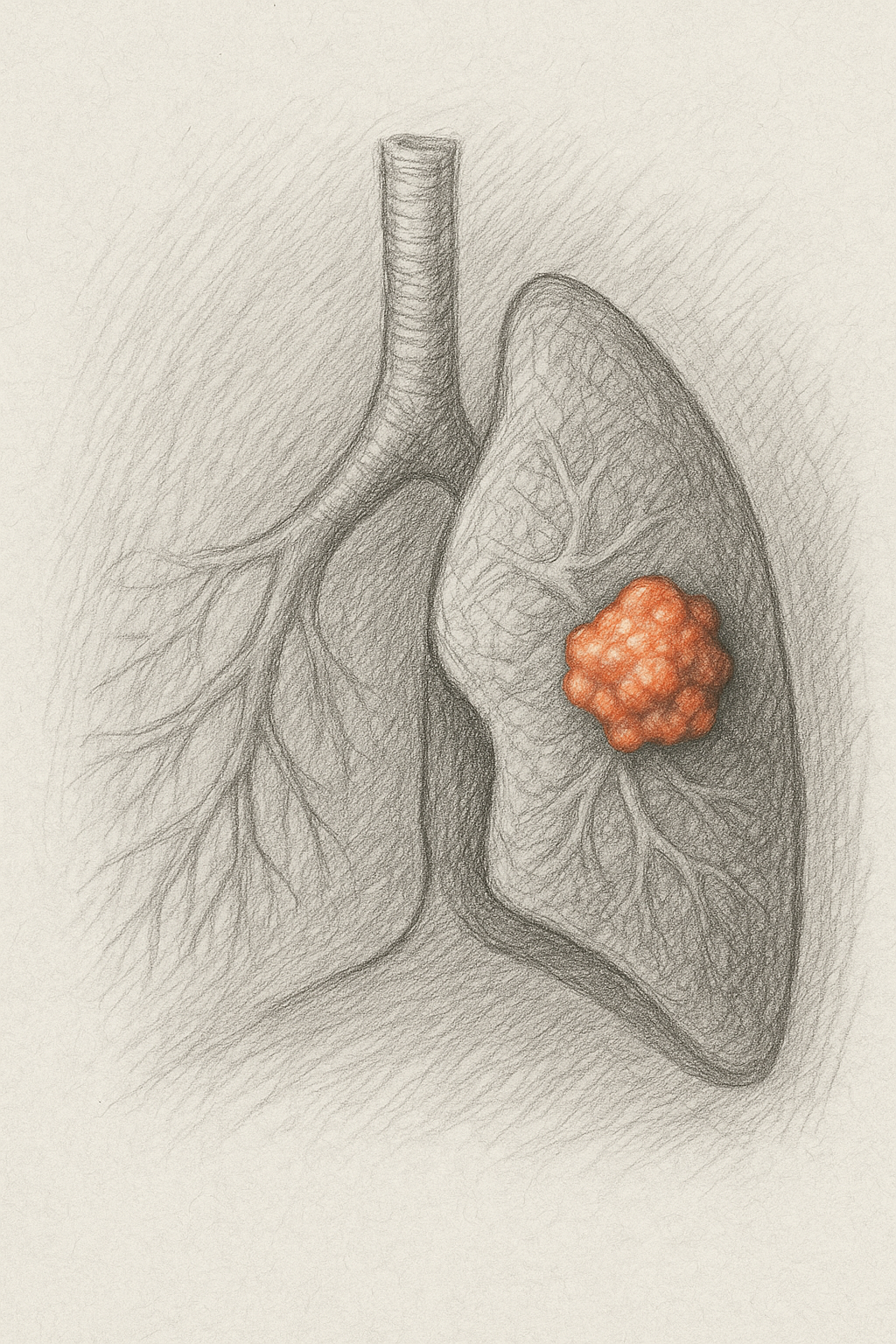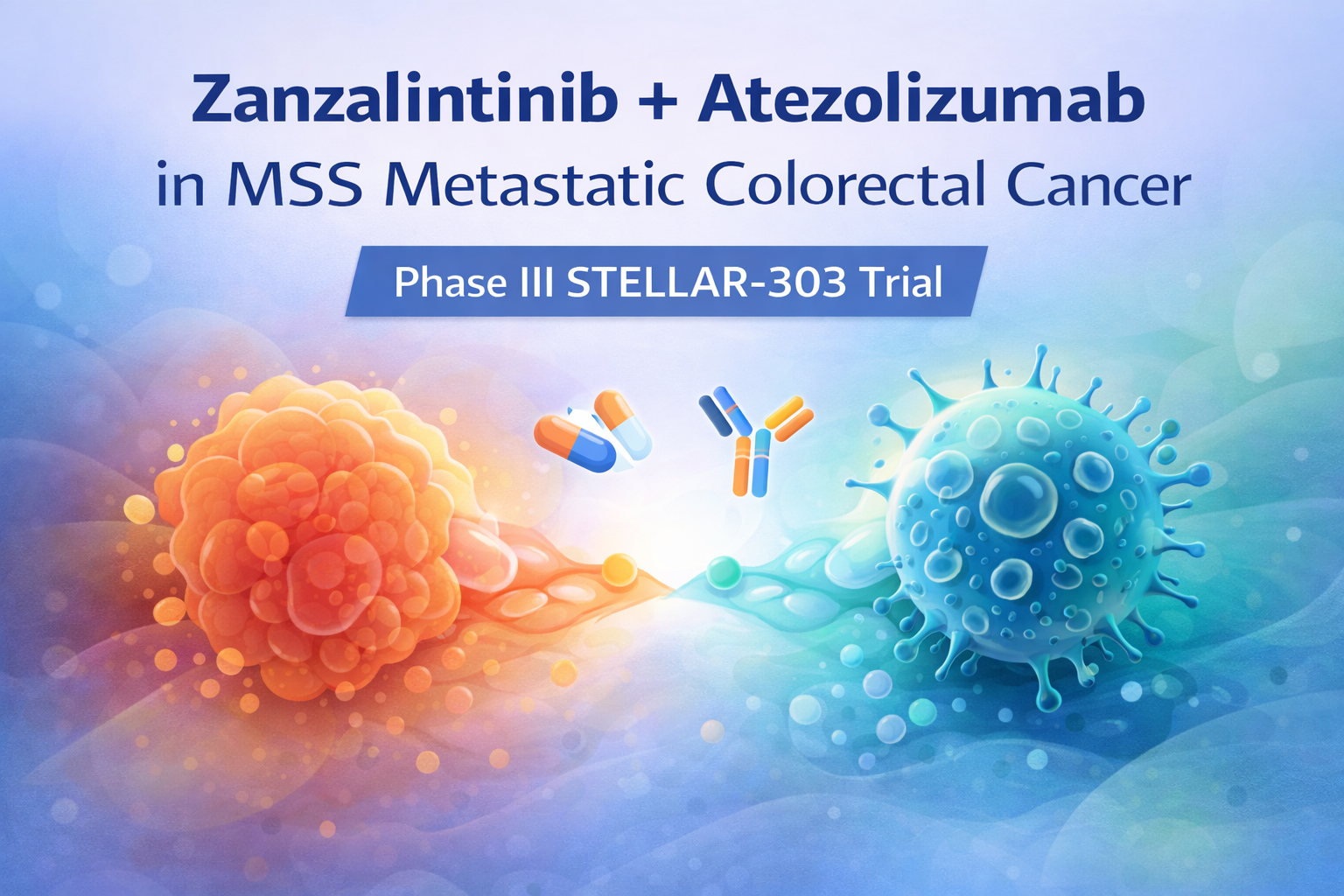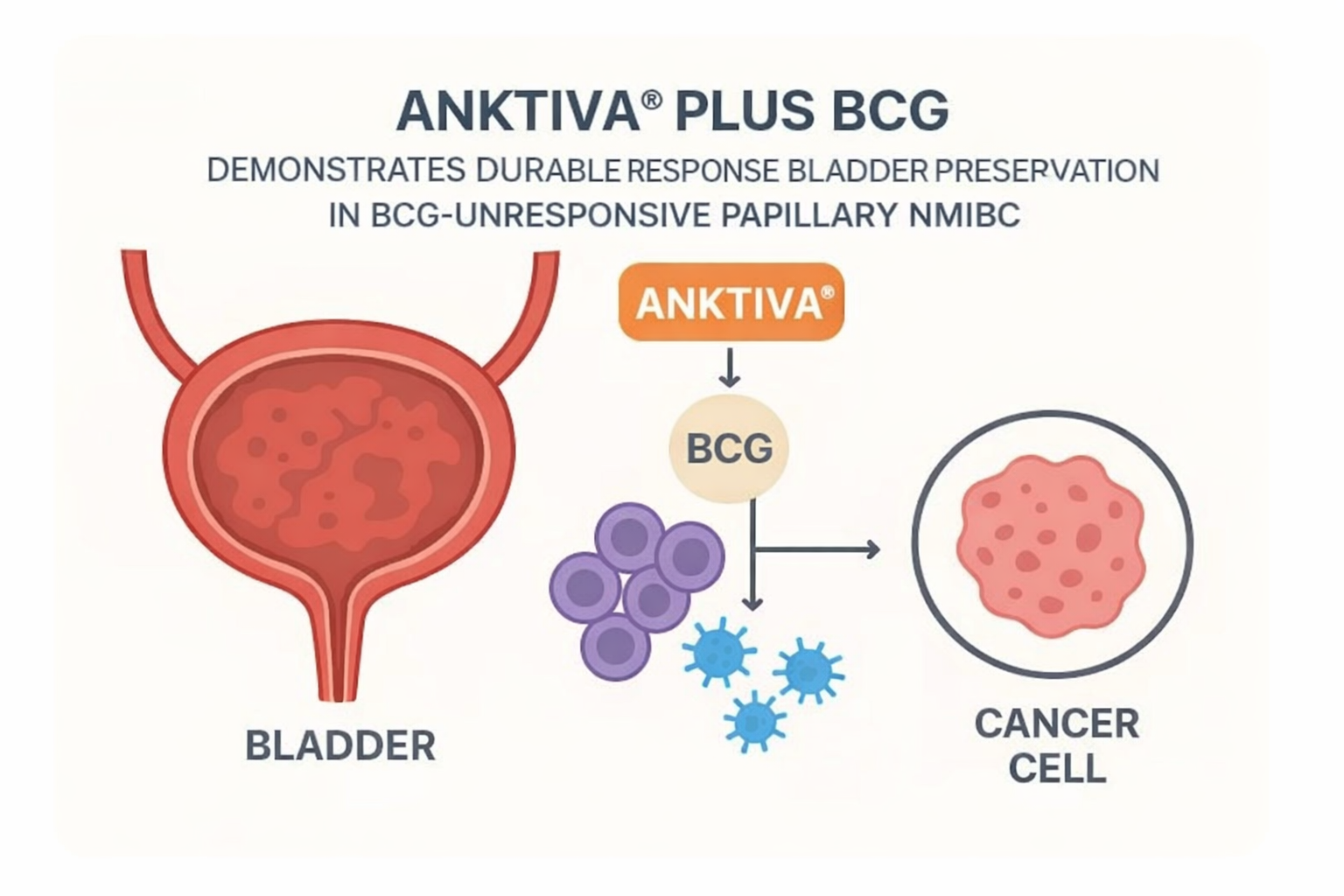

Source: Lung Cancers Today
URL: https://www.lungcancerstoday.com/post/checkmate-77t-perioperative-nivolumab-shows-long-term-efs-and-favorable-os-trend-in-resectable-nsclc

Perioperative nivolumab continues to demonstrate significant event-free survival benefits (HR 0.61) compared with placebo in resectable NSCLC patients at 41 months follow-up. ctDNA clearance emerges as a predictive biomarker for improved outcomes regardless of treatment arm, supporting its potential role in treatment monitoring.
Study Design & Population
- Phase 3 randomized controlled trial (CheckMate 77T)
- 621 patients with resectable stage IIA-IIIB NSCLC
- 1:1 randomization to perioperative nivolumab vs placebo plus chemotherapy
- Median follow-up: 41 months
- Treatment: neoadjuvant therapy (4 cycles) followed by adjuvant therapy (13 cycles)
Key Findings
- Event-free survival: HR 0.61 (95% CI 0.46-0.80) favoring nivolumab vs placebo
- 30-month EFS rates: 61% nivolumab vs 43% placebo
- Overall survival trend: HR 0.85 favoring nivolumab (median OS not reached)
- 30-month OS rates: 78% nivolumab vs 72% placebo
- ctDNA clearance: Associated with improved EFS (HR 0.41 nivolumab, HR 0.62 placebo)
- EFS benefit maintained regardless of disease stage, histology, or PD-L1 expression
Clinical Implications
- Confirms perioperative nivolumab as standard of care for resectable stage IIA-IIIB NSCLC
- ctDNA clearance may serve as early predictor of treatment response and long-term outcomes
- Treatment efficacy appears independent of common genomic alterations (KRAS, STK11, KEAP1 mutations)
- Long-term follow-up supports durable benefit without new safety concerns
Limitations
- Overall survival data remains immature with wide confidence intervals
- First prespecified interim OS analysis may be underpowered for definitive conclusions
- ctDNA analyses were exploratory and require validation in prospective studies
- Limited data on treatment discontinuation rates and long-term toxicity management




